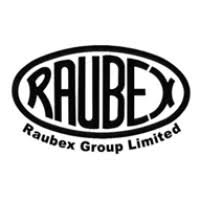In August 2020, Iowa and several Midwest states were hit with a powerful land hurricane
known as a derecho, an unprecedented storm that resulted in $11.9 billion in damages
across the region. The storm’s mini-tornados, flooding and hail hit a swath of rich agricultural
land across 90,000 square miles and flattened grain silos, hay storage facilities, barns and
destroyed millions of dollars of agricultural equipment.
Although devastating, the destruction offered an enormous opportunity for many construction
firms. Among them was Nevada, Iowa-based Mid-States Companies, a collection of firms
offering design and engineering, millwright, building, material handling equipment, crane, and
trucking services to agriculture operations and other industries.
“The storm destroyed millions of bushels of storage in a matter of hours,” says Andrew
Pistorius, Mid-States Chief Financial Officer, adding many of the grain silos recently built were
expected to last 50 years or more. “Everything had to get rebuilt quickly. All of a sudden, we
had all this work to do.”
Operating on QuickBooks and JobBOSS, executives knew increasing their workloads by more
than 50 percent would be challenging at best.
“This was a catalyst moment for us where we had to figure out how to do more work than we’d ever
done,” Pistorius says.
“But what it did was it turned us into a different company because we realized we could do a lot
more when we leveraged other strategies.”
Mid-States deployed new labor strategies, changed how it worked with subcontractors, and
invested in a digital transformation. Revenue the year following the derecho jumped by $30
million. The transition, however, wasn’t easy. Throughout its first two decades, family-owned
Mid-States ran on QuickBooks, the basic entry-level financial package that many small firms use
when they begin operations. Over time, the company grew quickly, adding a number of
construction-related services. It is now comprised of at least 12 companies. Rather than
spending what is often perceived as a more than $1 million investment in a traditional
enterprise-level ERP, Mid-States augmented QuickBooks with many, many spreadsheets.
Eventually, operating on spreadsheets and trying to run its manufacturing operations on the
scheduling program named JobBOSS, became unwieldy and inefficient. To quote a project,
employees used individually created spreadsheets to calculate costs, which could take much
of a day. They then took another day to create an actual bid, using their own personally
made spreadsheets. When changes were suggested by a customer, they would update the
spreadsheets and email additional changes back and forth. All this information was stored
locally on the employee’s computer.
“We didn’t have any way to track where each bid or project was at,” says Pistorius. To learn
how many bids were outstanding, which ones were good opportunities, which ones were re-priced
or even the total project revenue amounts anticipated meant one-off conversations with the sales
team. “It was very people-based, not process-based.”
Needed WIP, Project Accounting
The construction edition of QuickBooks was fine for accounting, but not for project accounting
or analysis, Pistorius says.
“It’s not built for management. It can account for your projects, but it’s not going to help you
schedule, it’s not going to help you create new systems to be able to track compliance or
things like that.” In addition, only the outside accountant had access to the data, so if Pistorius
wanted a report, for example, she was needed to run it. “There was no ability to self-serve and
do analysis, and then consolidate data and forecast,” says Pistorius.
Other executives also needed data and analysis capabilities that QuickBooks didn’t provide.
“This is a really simple example, but if Austin, who is our chief operating officer, wanted to
know what our net revenue was for the year, I had to go run four reports in QuickBooks and
then do the net elimination because the data wasn’t integrated and we didn’t have any sort of
intercompany tracking or a system that could do that,” Pistorius says.
Because there was only the basic financial system, they didn’t have access to data such
as man-hours worked in a week, work in progress, or man-hour efficiency. “There was no
statistical system,” he says.
The manufacturing side of the business was using JobBOSS and QuickBooks, and lacked
operational visibility. “JobBOSS was very clearly written for Windows XP and was very
inflexible,” says Pistorius who used SAP products at prior companies. QuickBooks custom
reporting carried expensive consulting fees, and the standard reports didn’t contain the
information he wanted. “It got to the point where there weren’t enough controls or systems and
we needed to have project budgets that weren’t in spreadsheets,” Pistorius says. “It just wasn’t
going to work. We needed to know where we were at before the end of a job.”
“We had no way of knowing where we were on a job relative to how it was estimated unless
a guy pulled up his spreadsheet that was saved to his computer,” he adds. “And when we
needed to build a job, we didn’t have that spreadsheet. So, we didn’t know what he sold it at,
and we didn’t know if it was a fixed-price job. We knew we had given the customer a bid, but
we didn’t know what was agreed upon. We didn’t have a place to store the document relative
to the job so that you could get back to it quickly. We had many problems, probably more than
we knew.”
The systems Mid-States had didn’t allow for any automation, nor could QuickBooks handle
manufacturing exceptions. The storm and huge opportunity highlighted the need for a better
financial platform, Pistorius says
 Canada (English)
Canada (English)
 Colombia
Colombia
 Caribbean and Puerto Rico
Caribbean and Puerto Rico
 Ecuador
Ecuador
 India
India
 Indonesia
Indonesia
 Ireland
Ireland
 Malaysia
Malaysia
 Mexico
Mexico
 Panama
Panama
 Peru
Peru
 Philippines
Philippines
 Singapore
Singapore
 South Africa
South Africa
 Sri Lanka
Sri Lanka
 Thailand
Thailand
 United Kingdom
United Kingdom
 United States
United States








